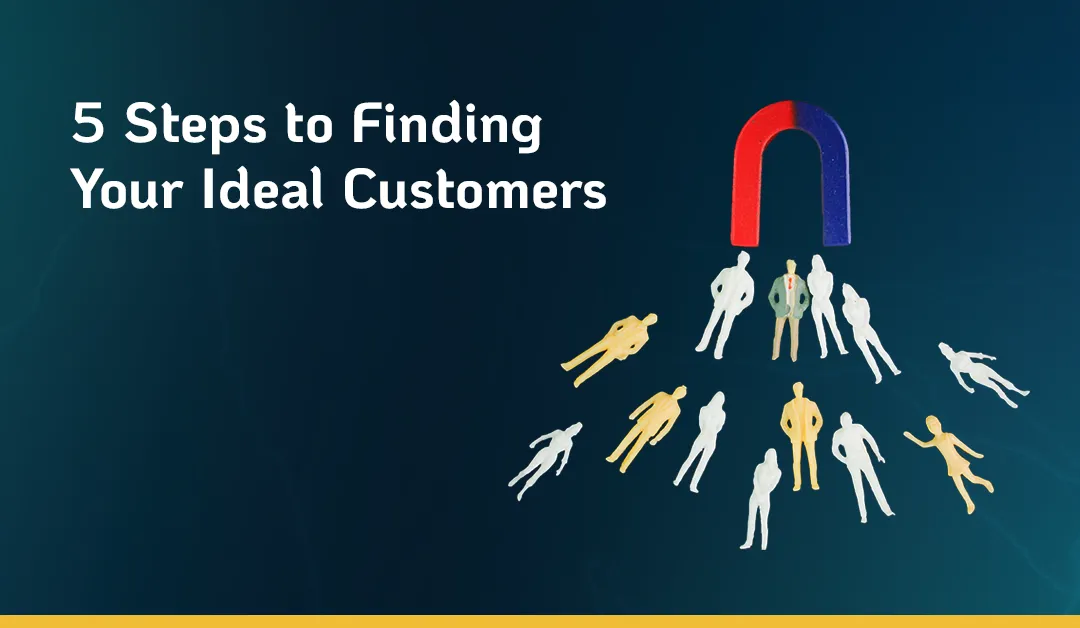Have you ever felt like you’re marketing to everyone but selling to no one? You’re not alone. Many businesses fall into the trap of casting a wide net, hoping to catch anyone with a pulse and a wallet. But here’s the truth: not all customers are created equal. Some will love you, some will ghost you, and some will make you question your life choices.
That’s where the 80/20 principle comes in. It tells us that 20% of your customers drive 80% of your revenue. That means a large chunk of your clientele may be draining your time and energy without giving much in return. So, instead of chasing the wrong crowd, let’s zero in on those golden customers who truly value what you bring to the table.
Here’s how you do it in five steps:
Step 1: Identify Your Ideal Customer (a.k.a. Your Business Soulmate)
Before you go looking for your dream clients, you need to know what they look like. Think of it like online dating—would you rather swipe right on everyone or focus on the people who actually share your interests? (No judgment if you’re into the chaos of random matches.)
Start by listing characteristics that make someone an ideal client or what may be red flag—those nightmare clients you want to avoid. Here are some of mine.
Traits of an Ideal Customer
✔ Has a clear vision but needs expert help to execute it
✔ Wants to grow and values expertise
✔ Looking for a collaborative partnership
✔ Values quality over the cheapest option
✔ Understands that marketing is an investment, not an expense
✔ Respects your time and expertise
Red Flags to Avoid
✔ Only focused on price, not long-term value
✔ Micromanages every detail and ignores expert advice
✔ Disrespects time and lacks patience
✔ Expects overnight results
By knowing who you want and who you don’t, you’ll save yourself endless headaches.
Step 2: Categorize Your Ideal Customers (Because Not All Heroes Wear Capes)
Your best clients likely fall into different personas. Here are a few types I choose to focus on for my business.
Dynamic Spark Customer Personas
- The Overwhelmed Business Owner – Wears too many hats, desperately needs marketing help, but doesn’t know where to start.
- The Growth-Minded Leader – Understands marketing’s ROI and is ready to invest in scaling their business.
- The Visionary Entrepreneur – Has big ideas and wants a brand that reflects their high standards and uniqueness.
By categorizing your customers, you can tailor your messaging and services to better meet their specific needs.
Step 3: Attract Them with a Lead Magnet (and a Dedicated Landing Page)
Now that you know who you’re looking for, you need a way to attract them. Enter the Lead Magnet—a free resource that provides value in exchange for their contact info.
Example Lead Magnet: “Small Business Marketing Survival Guide”
Mine includes:
✔ A step-by-step guide to prioritizing marketing tasks
✔ A checklist of website and branding must-haves
✔ Time-saving marketing automation tips
✔ Common small business marketing mistakes (and how to fix them)
But here’s where many businesses go wrong: They don’t create a dedicated landing page.
Why a Landing Page Matters
A landing page is laser-focused on one goal—getting the visitor to sign up for your Lead Magnet. No distractions, no competing calls to action, just a clear message about the value they’ll get. Here’s why it’s essential:
✔ Increases conversions—A single, focused page converts better than a generic website page
✔ Improves ad performance—When paired with targeted social media or Google Ads
✔ Makes tracking easier—So you can see exactly how well your lead magnet is performing
✔ Enhances credibility—A professional landing page signals that you’re serious about your business
Step 4: Nurture Your Leads (Because Nobody Likes a Pushy Salesperson)
Once someone downloads your Lead Magnet, don’t leave them hanging. A well-crafted lead nurture sequence can turn a curious visitor into a loyal client.
A Simple Lead Nurture Email Sequence
- Deliver the lead magnet—Immediate value = good first impression
- Define Your Purpose—Share your story and why you’re passionate about helping businesses grow.
- Identify a Common Problem + Offer a Solution—Show how your services can eliminate their biggest struggles.
- Customer Testimonial—Nothing builds trust like proof from happy clients.
- Paradigm Shift—Address past frustrations they may have had with similar services and show how you’re different.
- The Offer—Now’s the time to present your solution and invite them to take the next step.
By warming up your leads, you turn potential clients into paying clients without resorting to spammy tactics.
Step 5: Get the Word Out (a.k.a. Smart Advertising)
Now that everything is in place, you need to get eyeballs on your lead magnet.
Traffic Strategies for Lead Magnets
✔ Run targeted ads on Google and social media, using your defined customer personas
✔ Leverage organic marketing through social media posts, blog content, SEO
✔ Utilize partnerships by collaborate with complementary businesses for cross-promotion
✔ Place it on your website with strategic call-to-actions throughout
The goal? Get the right people to see your lead magnet, sign up, and enter your nurture sequence. Done right, this creates a self-sustaining cycle of attracting, engaging, and converting ideal customers.
Final Thoughts: Are You Attracting the Right Customers?
If your marketing feels like a game of chance, it’s time to get strategic. By identifying, attracting, and nurturing the right leads, you’ll build a business with clients who value what you do—instead of wasting energy on the wrong ones.
🔹 Want to see this in action? Download my lead magnet and experience the process firsthand!
🔹 Ready to refine your strategy? Let’s chat—schedule a consultation today.
Your ideal customers are out there—you just need the right strategy to find them!


